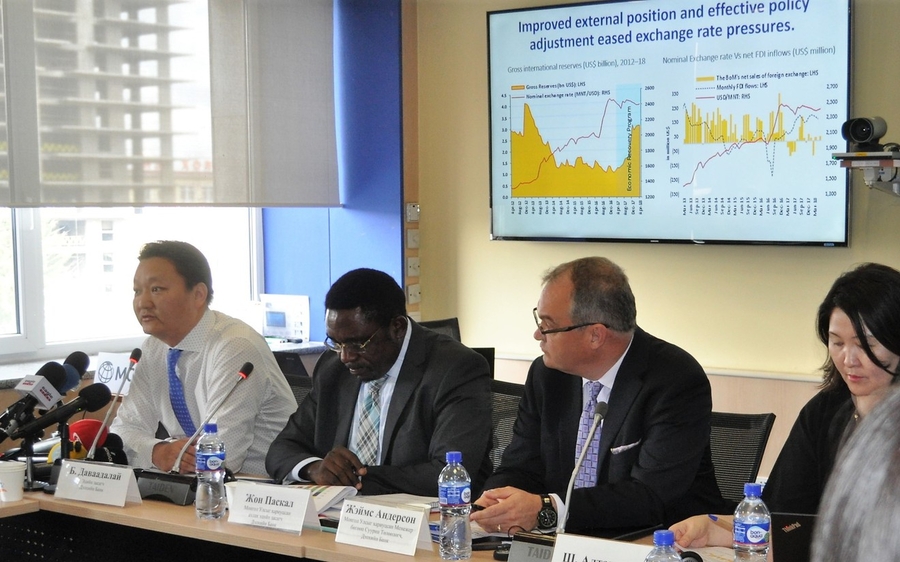ID :
497577
Mon, 07/09/2018 - 13:22
Auther :
Shortlink :
https://oananews.org//node/497577
The shortlink copeid
WORLD BANK: MONGOLIA’S GROWTH PROSPECTS REMAIN POSITIVE BUT MORE EFFICIENT PUBLIC INVESTMENT NEEDED

Ulaanbaatar /MONTSAME/ 'Mongolia Economic Update', the latest World Bank report on Mongolia’s economy launched on July 6. The report highlights the importance of improving efficiency of its public investment programs given extensive consequences from the overambitious and unrealistic investment programs implemented in the past.
Mongolia’s economic performance has improved dramatically with GDP growth increasing from 1.2 percent in 2016 to 5.1 percent in 2017 and 6.1 percent in the first quarter of 2018. While short and medium-term economic prospects remain positive, Mongolia faces core structural vulnerabilities that hinder its potential, according to the report.
“Last year was a good year for Mongolia with favorable commodities prices and the successful implementation of the government’s economic recovery program,” said Dr. Jean-Pascal N. Nganou, World Bank Senior Economist for Mongolia and Team Leader of the report. “This resulted in improved fiscal and external balances, triggering a slight decline of the country’s public debt.”
The recovery is expected to accelerate with a GDP growth rate averaging more than 6 percent between 2019 and 2020, driven by large foreign direct investments in mining. Other than agriculture, which was severely affected by harsh weather conditions during the winter, most major sectors including manufacturing, trade, and transport are expected to expand significantly. On the back of increasing exports and higher commodity prices, economic growth will continue to have a strong positive impact on government revenue, contributing to the reduction of the fiscal deficit.
The unemployment rate dropped to 7.3 percent in the last quarter of 2017, compared to 8.6 percent a year earlier. Still, it increased to 9.7 percent in the first quarter of this year, reflecting Mongolia’s highly seasonal employment patterns due to difficult working conditions in the winter, especially in construction, agriculture, and mining.
The report highlights possible short- and medium-term risks including political risks, regional instability, climate shocks, and natural disasters. The most critical risk identified is a sudden relaxation of the government’s commitment to full implementation of its economic adjustment program supported by development partners.
In addition, the economy remains vulnerable to fluctuations in global commodity prices and a productivity gap. The best long-term protection against these two vulnerabilities is the diversification of the Mongolian economy.
“To create a strong buffer against economic vulnerabilities, the government and donors should give a high priority to economic diversification that helps counter the ups and downs of the mining sector. Investing in human capital and strengthening the country’s institutions are the best way to support diversification, together with sound investments in crucial infrastructure,” said James Anderson, World Bank Country Manager for Mongolia.
The report takes a closer look at public investment programs implemented over the past five years, which surged until 2015, contributing to large increases in public finance deficits and the public debt. Mongolia needs to review and reshape its public investment policies and decision-making processes to improve efficiency of public spending, including clear project selection and prioritization criteria, as well as proper maintenance of existing assets.
Source: worldbank.org





